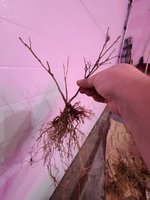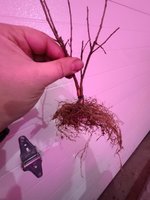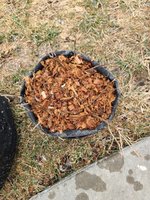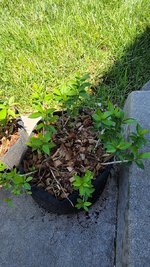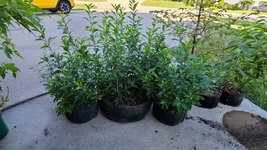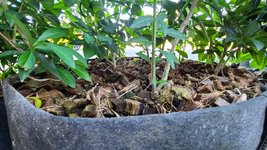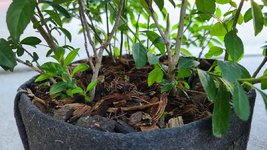LittleDingus
Omono
This thread will track my efforts with ilex decidua over the next 5 years...or until they all die...
I also have ilex verticillata in the challenge:
 www.bonsainut.com
www.bonsainut.com
but that is mostly because at the time I couldn't find decidua. Verticillata's native range of on the very fringe of what the rules allow whereas decidua's native range is my back yard
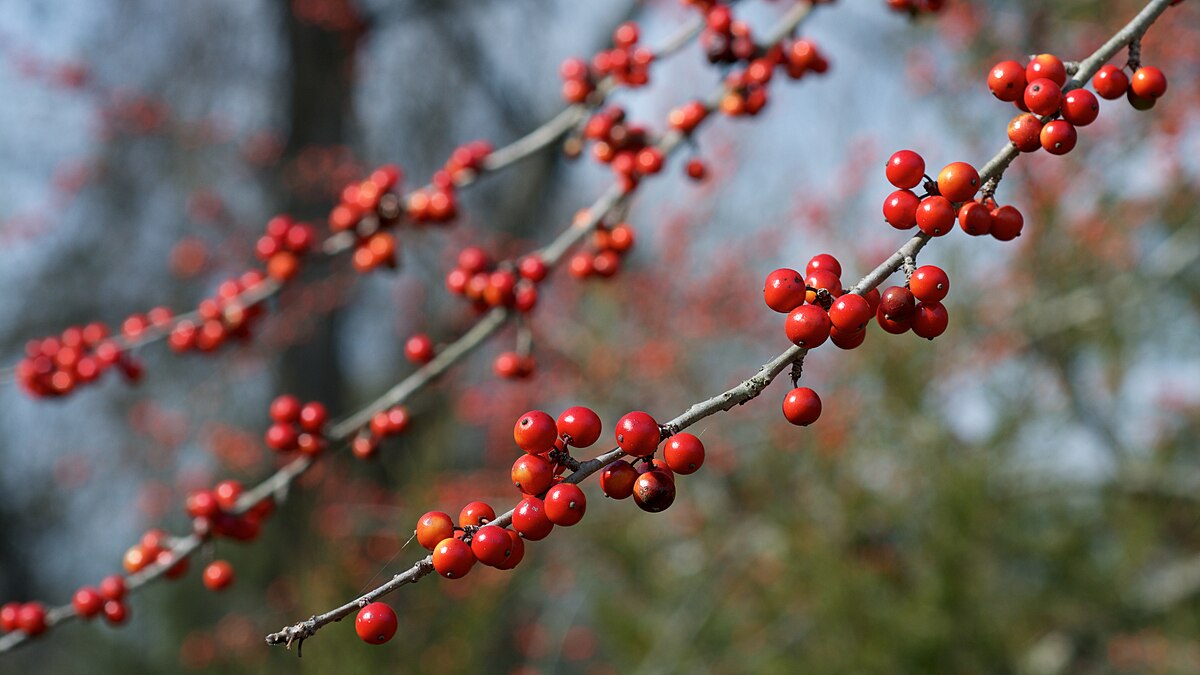
 en.wikipedia.org
en.wikipedia.org
I eventually found decidua available through the Missouri Department of Conservation
 mdc.mo.gov
mdc.mo.gov
so I ordered some! $0.44 a seedling when ordered in a bundle of 25...not a bad deal at all
They arrived yesterday packaged with some wild plum I didn't realize I ordered.

That's the wild plum sticking out the top of the package. I needed to open up the package to see the holly.

The Department of Conservation counted 25 seedlings, I counted 26...close enough for government work
Here's a typical seedling.
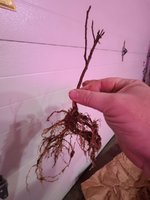
I'm quite happy with them for the price
For now, I counted out 10 and planted them in a 10 gallon grow bag that I folded over to half height. Think of it as a round Anderson flat...of sorts. Cumminty potted for now because I'm running out convenient grow space!
For now, these 10 will just grow out a bit. I'm not planning to do much with them this first year other than let them grow. I did make sure to put some of them at an angle for some interest...but I did leave a couple upright too.
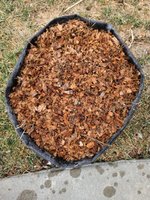
The soil is ~70% NAPA 8822 (DE) and 30% chunky coconut coir with an ~1" coir mulch on the top.
I picked out 8 more and potted them in a little smaller (3 gallon) grow bag also folded over to be half height. These I might also let grow unmolested this first year but am thinking these might be experiments...maybe a cascade or 3, early wiring, grow-n-chop, whatever strikes my fancy.
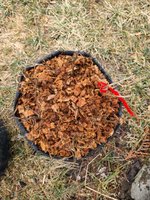
The downside to ordering a yearling pack like this is that they come ungendered. My hope is with 25 that at least some males and females survive my abuse long enough to be identified! As near as I can tell, it's possible they can flower at age 2 but more likely by age 4-5. That means I may need to keep as many as I can alive for the next 3-4 years before I can start to distinguish who is what! My hope is to only keep a single male (maybe a second as a backup) but then whittle down to only the best of the females. Whatever is left (if anything!) I hope to return to nature.
I also have ilex verticillata in the challenge:
5yr Native Tree Challenge - Dingus's ilex verticillata (Winter Berry)
This thread will track my efforts at ilex verticillata over the next 5 years...or until I kill the trees...whichever comes first! https://en.wikipedia.org/wiki/Ilex_verticillata At the time of joining this challenge, I lived in Missouri just outside of Kansas City. According to my best...
but that is mostly because at the time I couldn't find decidua. Verticillata's native range of on the very fringe of what the rules allow whereas decidua's native range is my back yard

Ilex decidua - Wikipedia
I eventually found decidua available through the Missouri Department of Conservation
Order Seedlings
so I ordered some! $0.44 a seedling when ordered in a bundle of 25...not a bad deal at all
They arrived yesterday packaged with some wild plum I didn't realize I ordered.

That's the wild plum sticking out the top of the package. I needed to open up the package to see the holly.

The Department of Conservation counted 25 seedlings, I counted 26...close enough for government work
Here's a typical seedling.

I'm quite happy with them for the price
For now, I counted out 10 and planted them in a 10 gallon grow bag that I folded over to half height. Think of it as a round Anderson flat...of sorts. Cumminty potted for now because I'm running out convenient grow space!
For now, these 10 will just grow out a bit. I'm not planning to do much with them this first year other than let them grow. I did make sure to put some of them at an angle for some interest...but I did leave a couple upright too.

The soil is ~70% NAPA 8822 (DE) and 30% chunky coconut coir with an ~1" coir mulch on the top.
I picked out 8 more and potted them in a little smaller (3 gallon) grow bag also folded over to be half height. These I might also let grow unmolested this first year but am thinking these might be experiments...maybe a cascade or 3, early wiring, grow-n-chop, whatever strikes my fancy.

The downside to ordering a yearling pack like this is that they come ungendered. My hope is with 25 that at least some males and females survive my abuse long enough to be identified! As near as I can tell, it's possible they can flower at age 2 but more likely by age 4-5. That means I may need to keep as many as I can alive for the next 3-4 years before I can start to distinguish who is what! My hope is to only keep a single male (maybe a second as a backup) but then whittle down to only the best of the females. Whatever is left (if anything!) I hope to return to nature.


